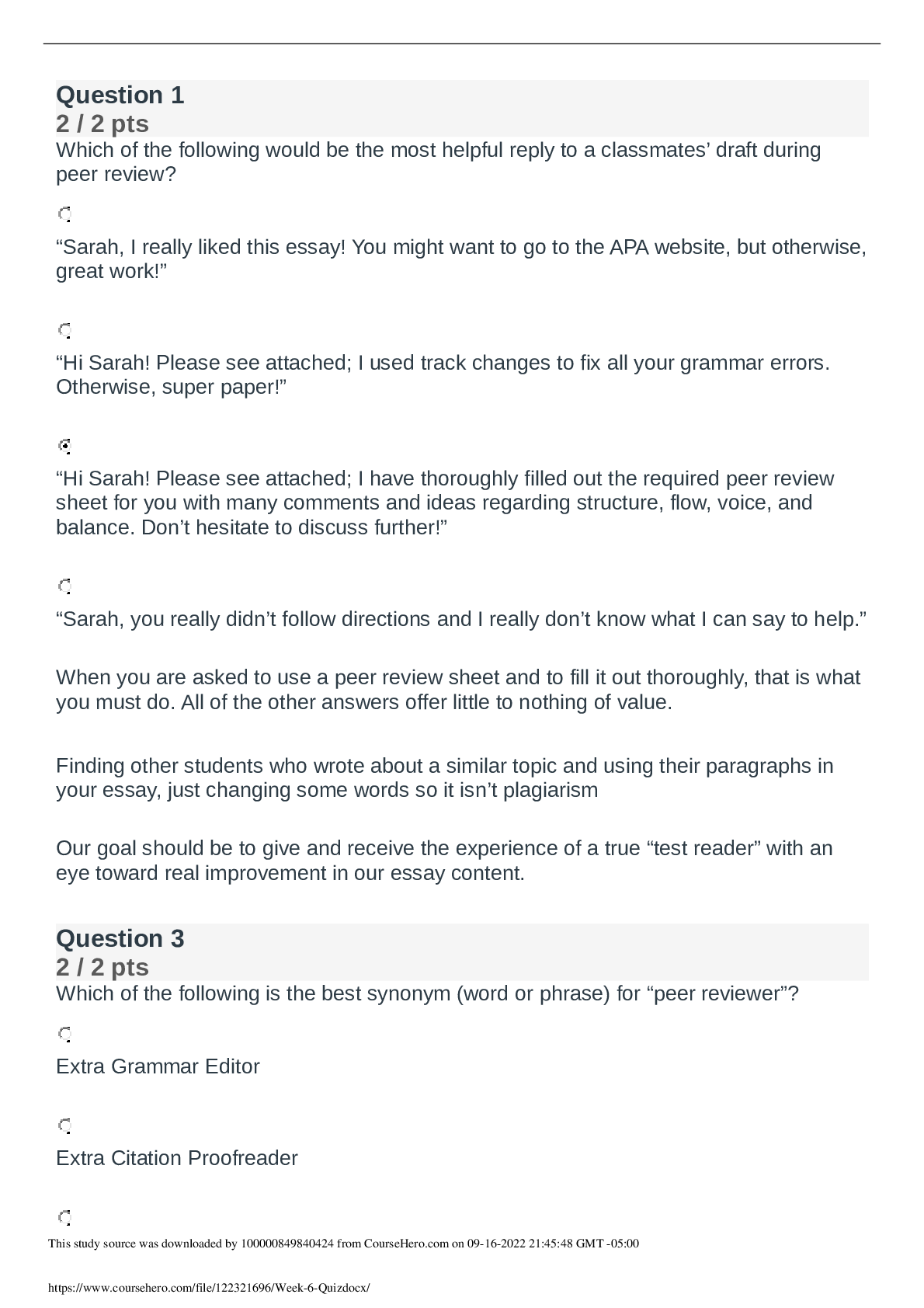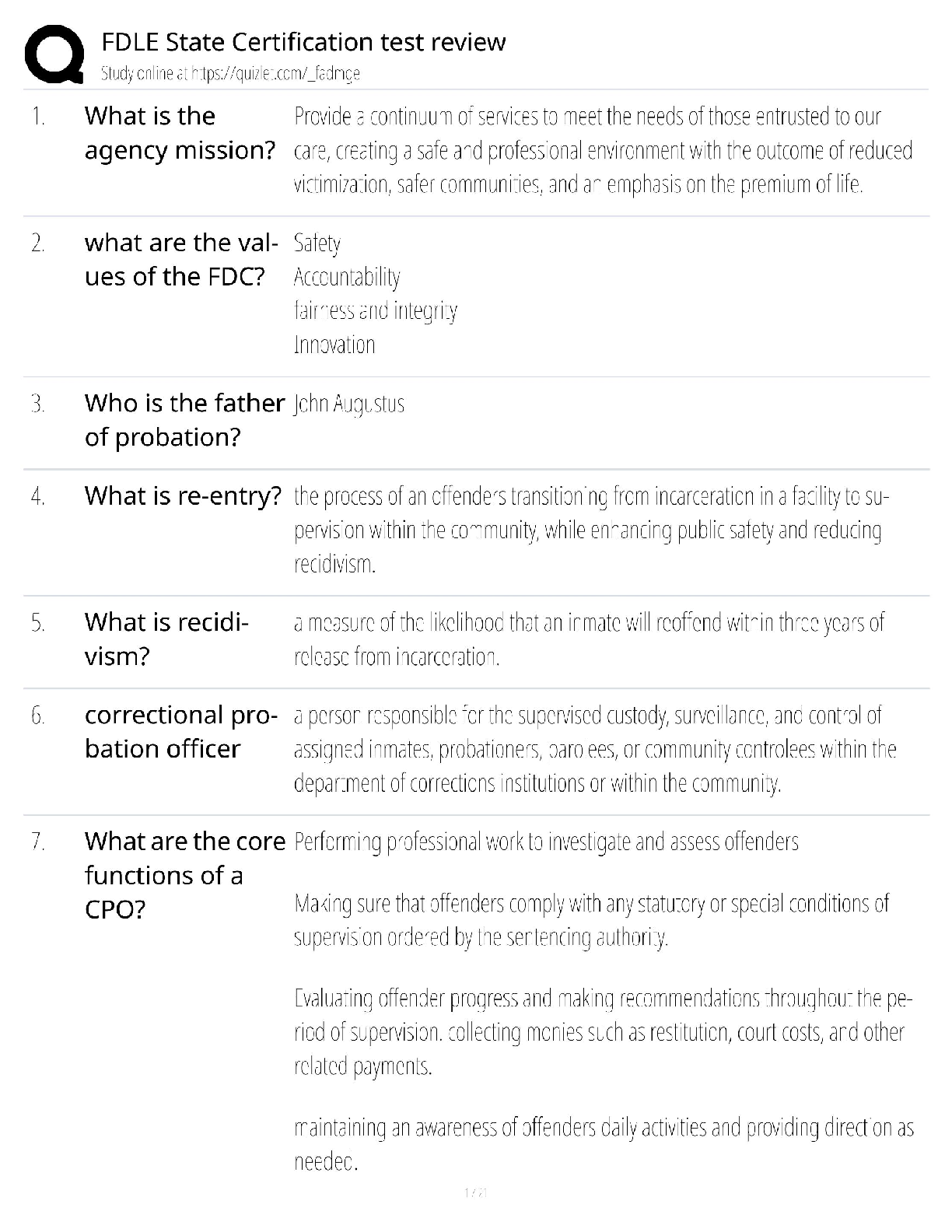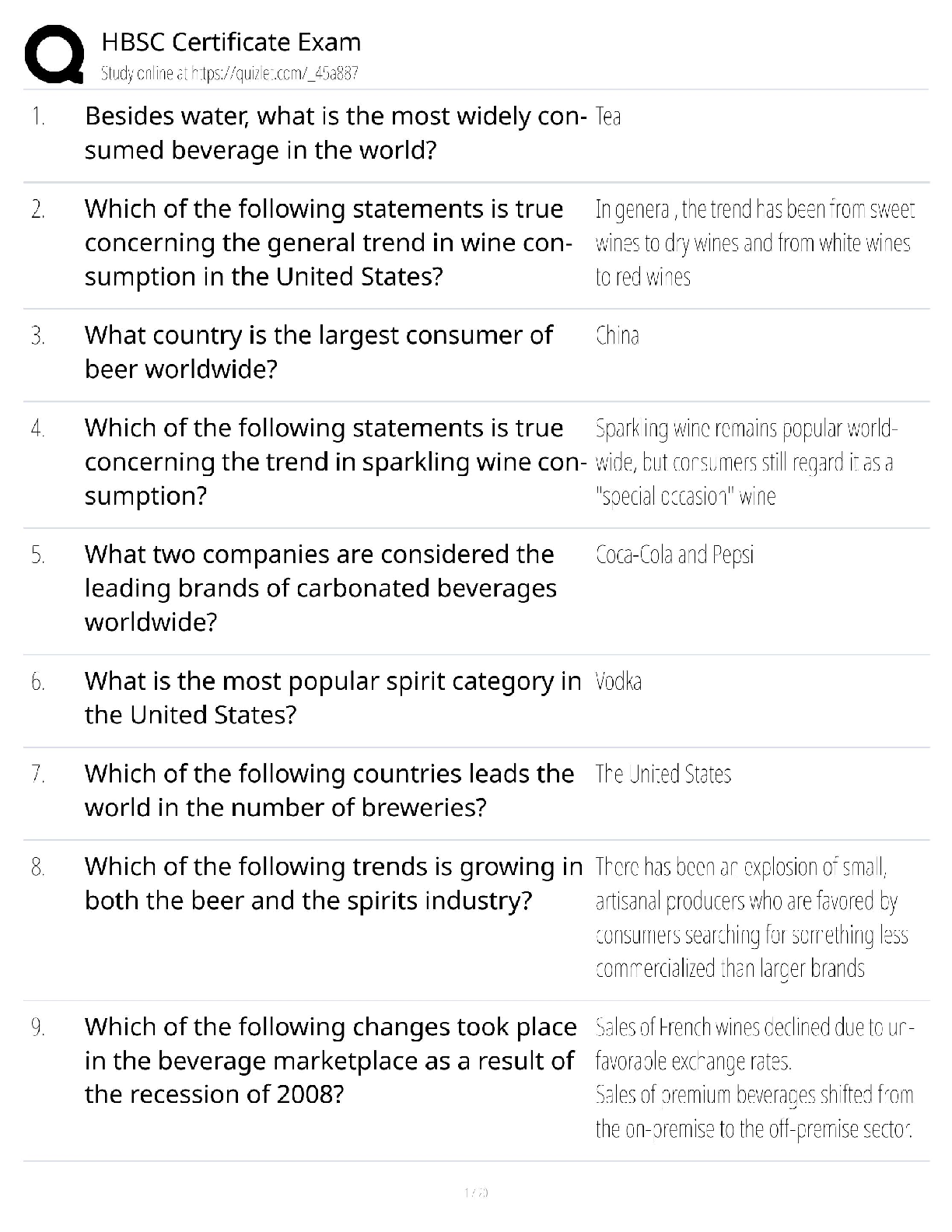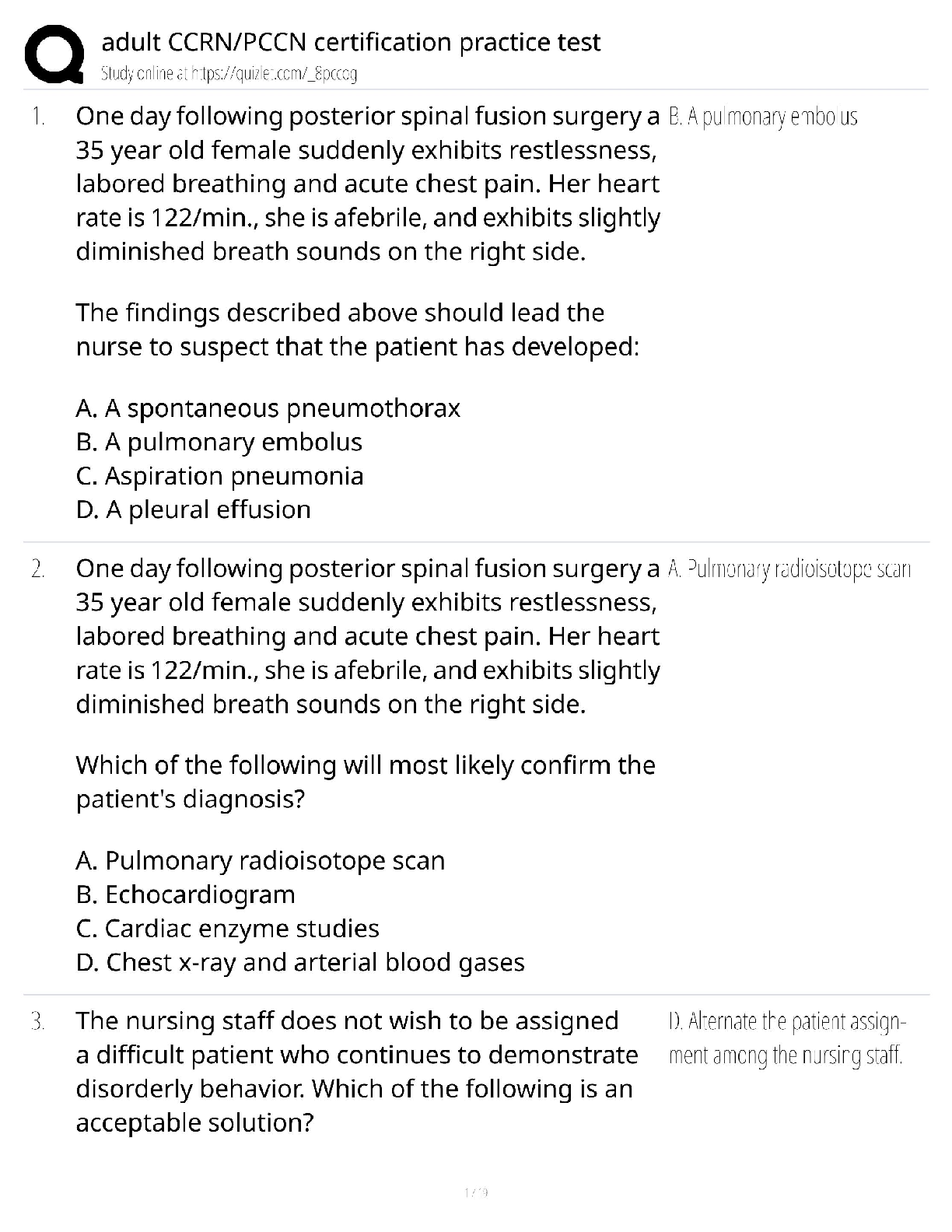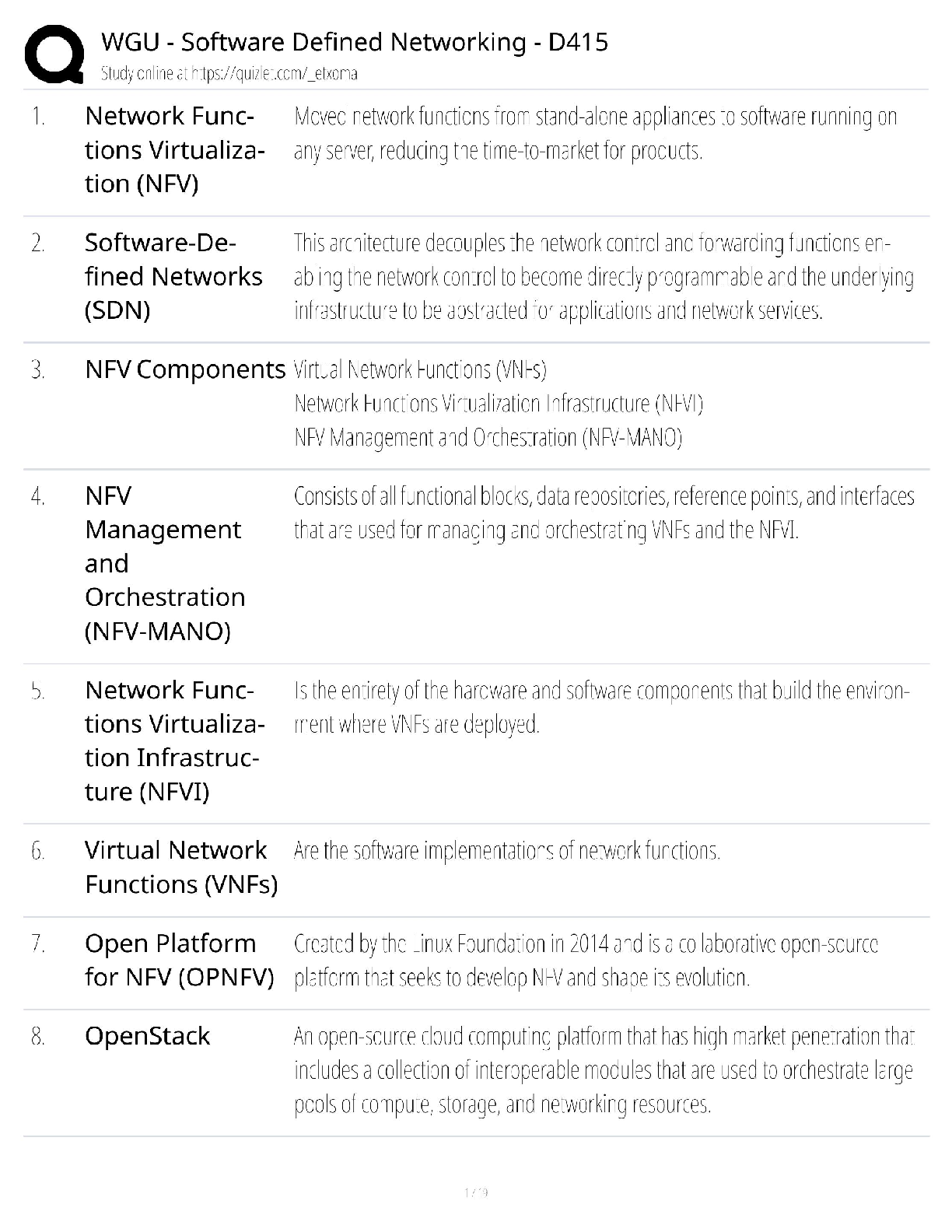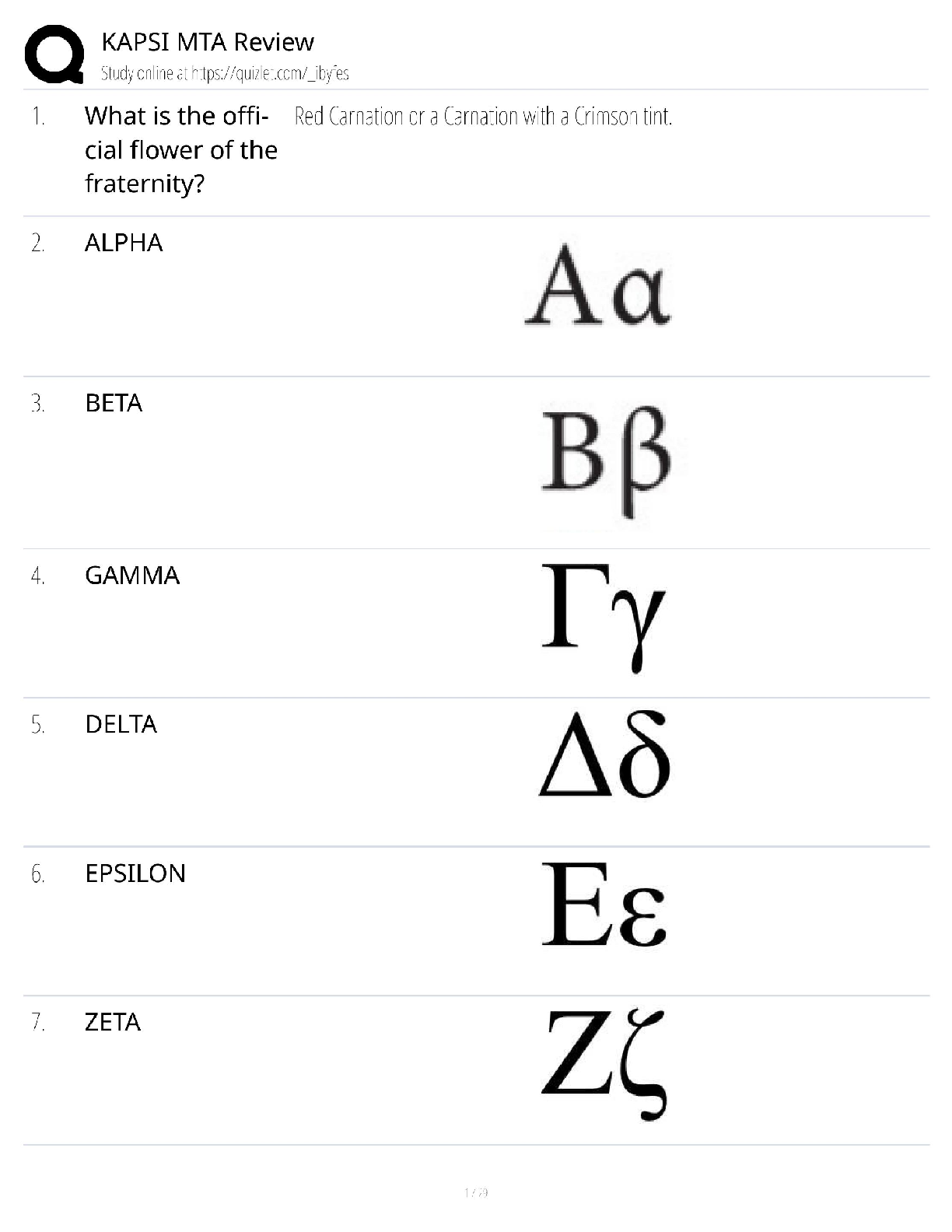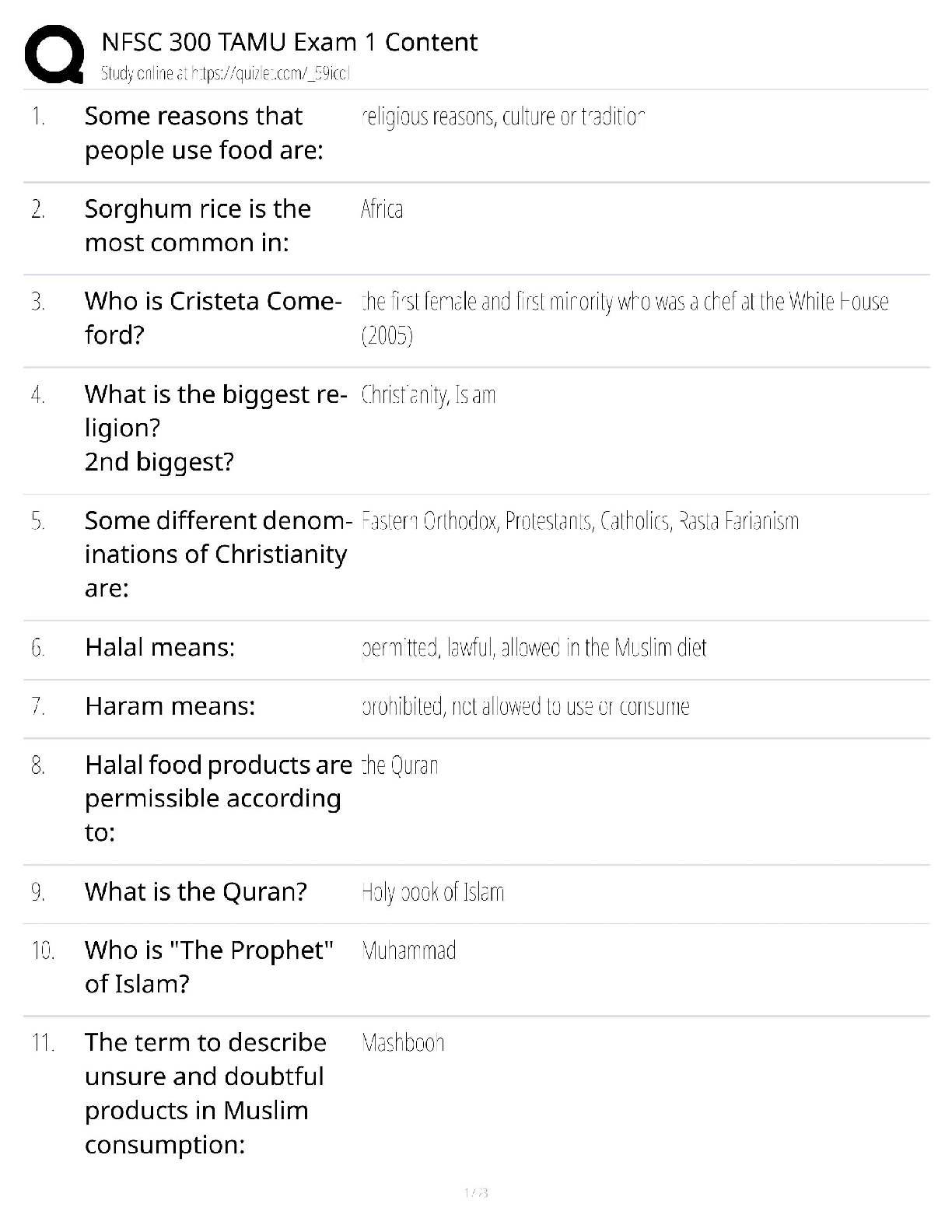Managerial Economics > QUESTIONS & ANSWERS > C157 and C128 combined test with 70 questions answers with rationales (All)
C157 and C128 combined test with 70 questions answers with rationales
Document Content and Description Below
Analyze each question and choose the best response. Record your rationale for each choice. 1. Quality improvement assumes that: a. Most problems with service delivery result from process difficul ... ties, not individuals. b. Frequent inspection is necessary to improve quality. c. Employees generally try to avoid work. d. Top management leads all quality improvement activities. Response A is correct. QI starts with the assumption that errors occur as a result of system failures, not individual errors. We should eliminate response C. In response B, frequent inspection might help ensure quality control over the process we have now, but will not help us exceed the capability of the existing process to improve quality. In response D, top management would be the CEO and senior management—there is not enough of them to go around to lead ‘all’ QI activities. 2. The term “quality” as used in quality improvement usually refers to: a. Characteristics of a product or service that bear on its ability to satisfy stated or implied needs. b. A product or service free of deficiencies. c. Having a high degree of excellence. d. All of the above. Although each of the definitions provided are different ways in which we think of attribute of “quality”, quality improvement focuses on delivering quality services or products as determined by the customer. Therefore, in QI, high “quality” rests on the ability to satisfy customer needs. A product or service that is free of deficiencies or has a high degree of excellence but does not meet the customer needs would not be considered a “quality” result (we would think of it as wasteful). Note also the IHI “Triple Aim”: • Improving the patient experience of care (including quality and satisfaction); • Improving the health of populations; and • Reducing the per capita cost of health care. 3. The major difference between traditional “quality assurance” activities (e.g., keeping track of the total number of different procedures conducted in your practice, rates of adverse outcomes) and “quality improvement” activities is that quality improvement also focuses on: a. People and competency. b. Analysis of data. c. Performance measures. d. Systems and processes. [Show More]
Last updated: 3 years ago
Preview 1 out of 24 pages
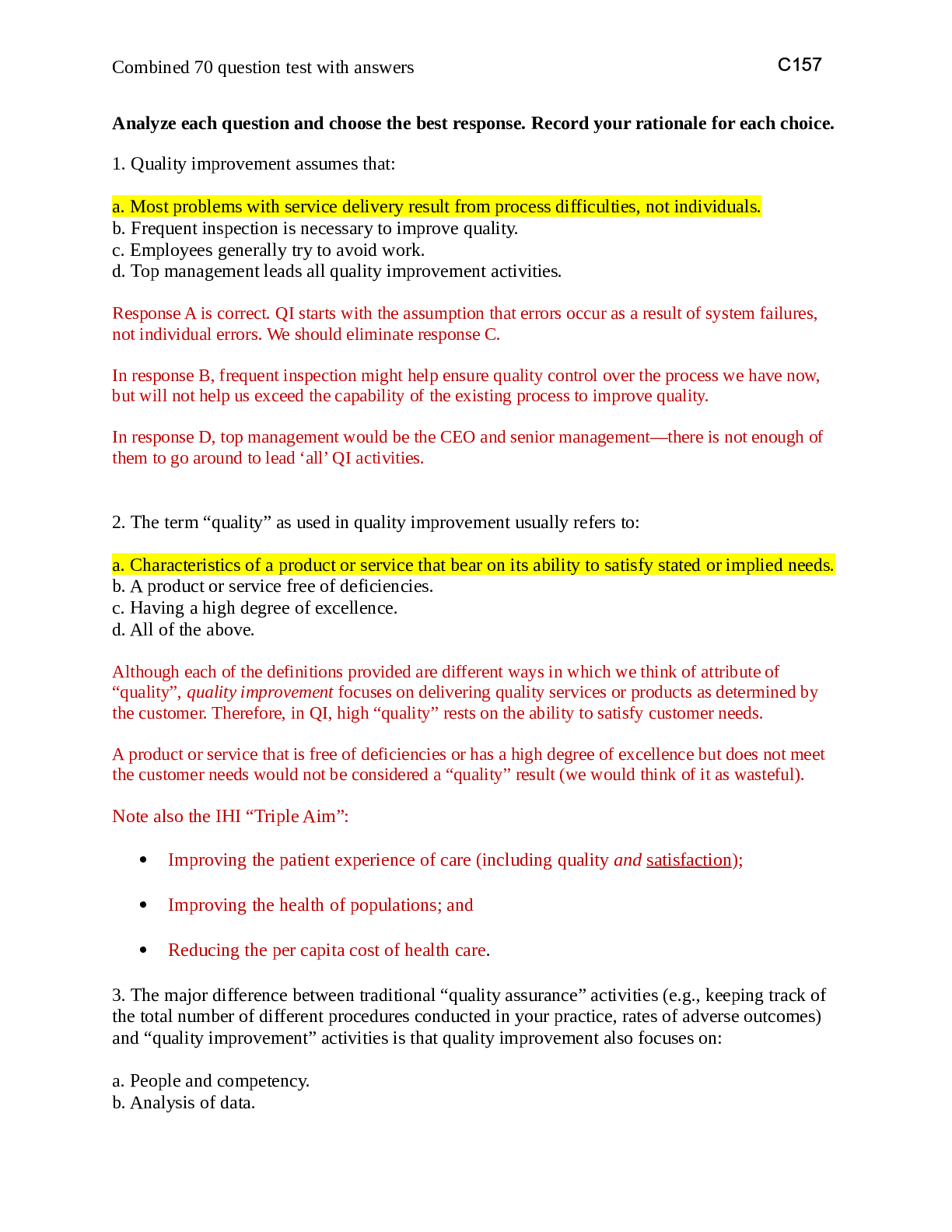
Buy this document to get the full access instantly
Instant Download Access after purchase
Buy NowInstant download
We Accept:

Reviews( 0 )
$12.50
Can't find what you want? Try our AI powered Search
Document information
Connected school, study & course
About the document
Uploaded On
Feb 13, 2021
Number of pages
24
Written in
All
Additional information
This document has been written for:
Uploaded
Feb 13, 2021
Downloads
0
Views
146

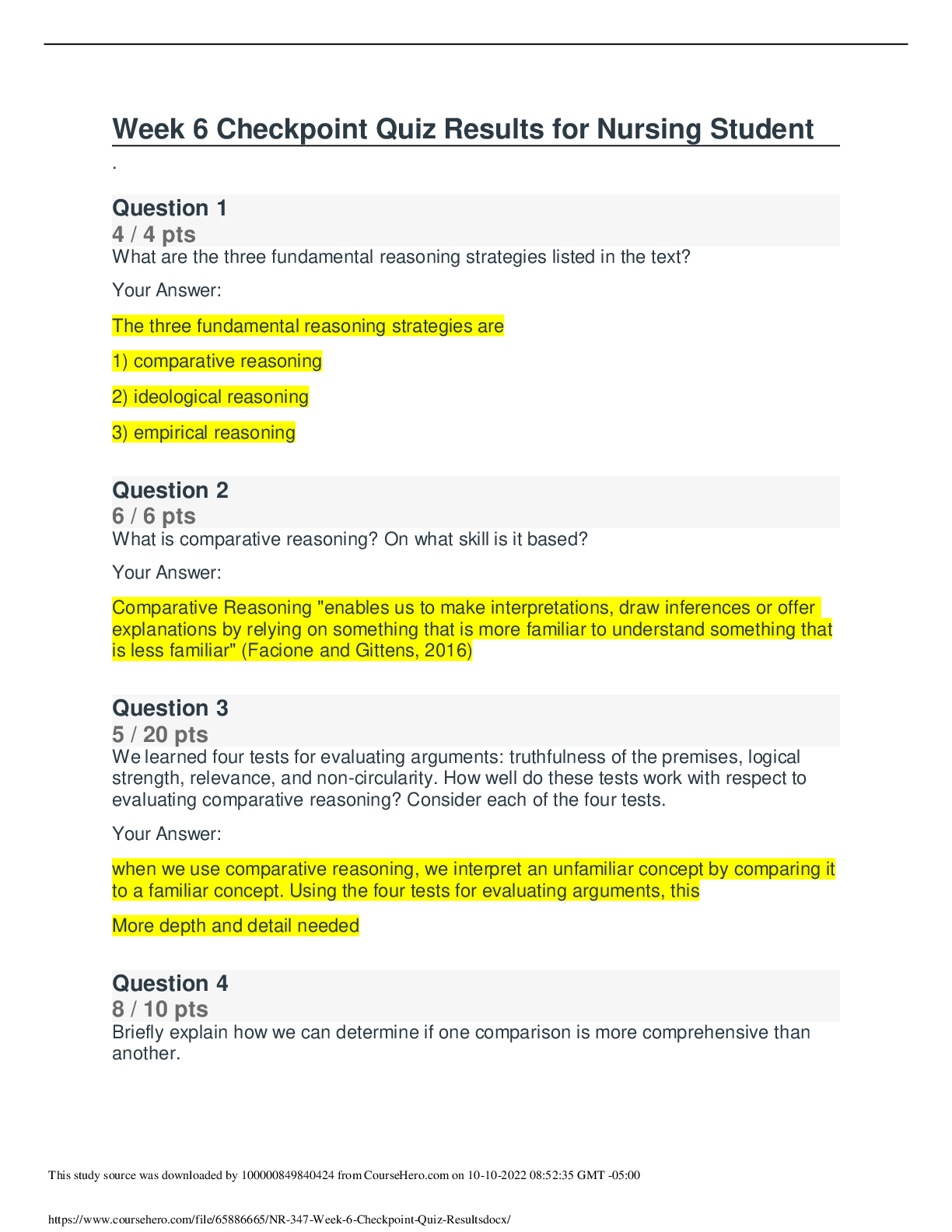

.png)




